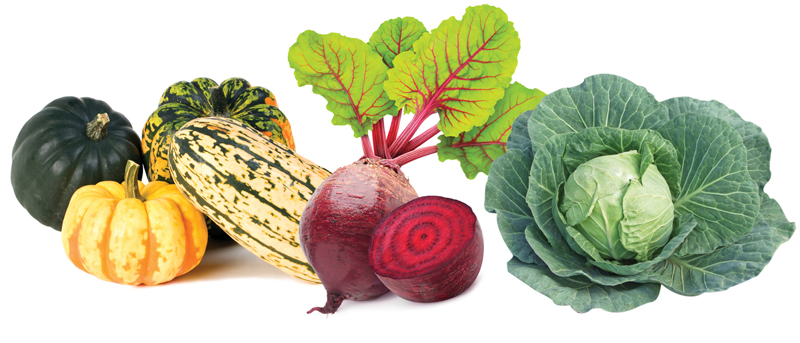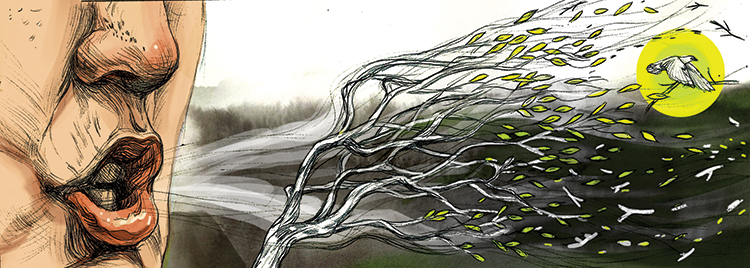Market Watch: Heavy Hitters
by Peggy Paul Casella
Winter Squash
(acorn, buttercup, butternut, hubbard, kabocha, spaghetti and turban)
Unlike their mild-tempered cousins of summer, winter squash have thick, inedible skins, hard seeds and dense, nonporous flesh that must be cooked before eating. They also come in all shapes and sizes: the short and squatty butternut and kabocha; the oblong hubbard; the smooth, torpedoed spaghetti; and the hat-shaped turban. Their flavor is intense and pumpkiny, and—like pumpkin—they’re delicious in both savory and sweet applications. Choose squash with unblemished, richly colored skin. Because of their hard, thick rinds, winter squash will keep in a cool dry place (unrefrigerated) for up to several months.
USES: Scoop out the seeds and membranes, fill with soup or stuffing and roast until the flesh is tender. Roast with oil and herbs or butter and spices, cook and mash the flesh with potatoes, or cube it for stews, soups and chilies. Steam and purée the flesh for pies, cakes, cookies, scones, parfaits, smoothies and other sweet treats.
Beets
(also known as beetroot)
Beetroot is a descendant of the sea beet, a wild plant indigenous to the Mediterranean and Atlantic coasts of Europe. The different varieties include red, gold, white and Chioggia (with fuchsia and white candy-striped flesh). Though the bulbous root is the most commonly eaten part, beet leaves are also edible and can be prepared in the same way as spinach or chard. The smaller the beet, the more tender and sweet it will be. Look for bulbs that are firm and heavy for their size, and store them in the fridge for up to three weeks.
USES: Shred them raw into slaws and green salads. Braise or roast them whole, caramelize them with onions or cook them into soups such as borscht. Toss cooked beets and fresh herbs with grains, salad greens and pastas. Pickle them. Roast, slice and serve them as hors d’oeuvres topped with blue or goat cheese, nuts and honey. Cook and purée them and add them to panna cotta, baked goods and smoothies.
Cabbage
The word cabbage is derived from caboche, a colloquial French term for “head.” It’s a vegetable whose shape ranges from flat to conical or round, and its color ranges from green to reddish-purple; leaves can be curly or waxy-smooth. Due to its versatile flavor, high vitamin content and cost-effective nature, this brassica is a staple food in cultures all over the world. A two-pound head of cabbage yields about 10 cups of shredded leaves, which can be used in multiple recipes throughout the week. You should choose a cabbage with crisp, tightly wrapped leaves. Keep it in a plastic bag in the refrigerator for up to two months.
USES: Shred it raw for tacos, slaws and other salads. Add to stir-fries and soups. Ferment it to make your own sauerkraut. Braise it with butter, onions, beer and sausage. Cut into wedges and roast with olive oil, salt and pepper. Blanch leaves, fill with a mixture of ground meat, onion, breadcrumbs, rice and seasonings, then roll them up and bake them in tomato sauce.
Peggy Paul Casella is a cookbook editor, writer, urban vegetable gardener, produce peddler and author of the blog Thursday Night Pizza.








